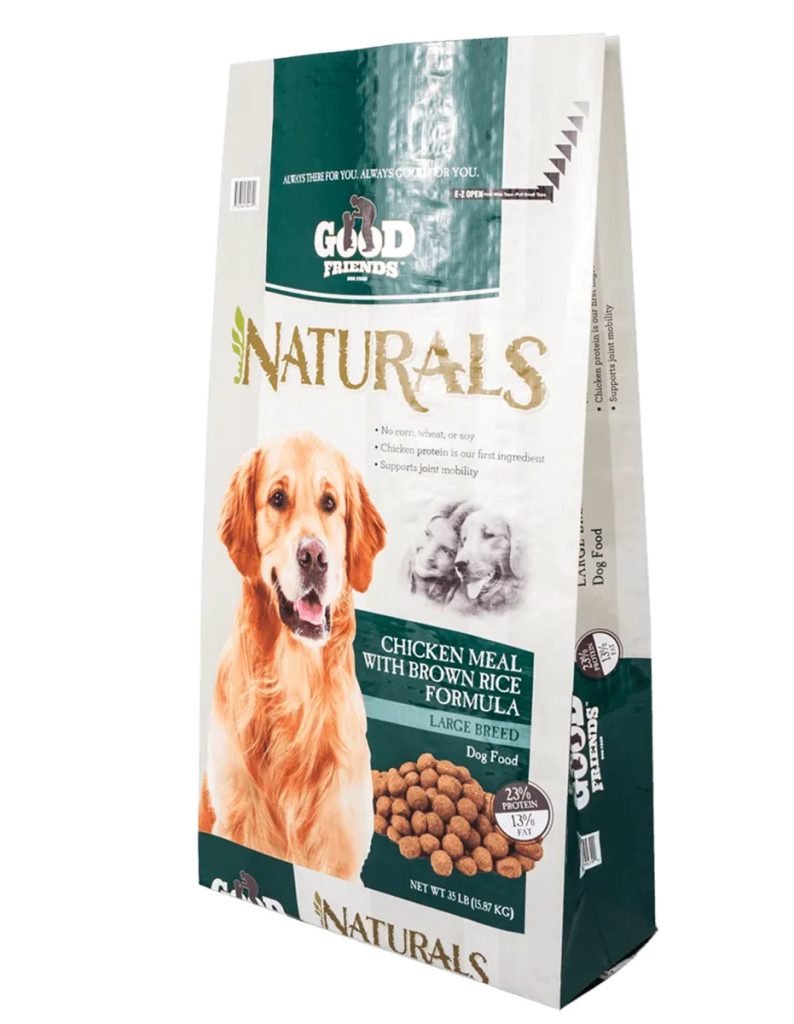
Introduction
Q: What ensures the superior quality of Transparent Woven Bags in high-demand industries like agriculture and retail?
A: Precision in production processes—extrusion, weaving, lamination, and printing—combined with advanced equipment from global leaders Starlinger and W&H guarantees durability, transparency, and compliance with international standards.
Transparent Woven Bags are revolutionizing packaging by offering visibility, strength, and customization. This report dissects their manufacturing workflow, emphasizing quality control (QC) at each stage and the role of cutting-edge machinery. Supported by data and case studies, we demonstrate how Woven Bag Manufacturers leverage technology to meet global market demands.
Production Workflow: From Extrusion to Final Packaging
1. Extrusion: Crafting High-Quality PP Tapes
The process begins with polypropylene (PP) pellets melted and extruded into flat tapes. Starlinger’s high-speed extruders ensure uniform thickness (±0.02mm) and melt flow index (MFI 2–4 g/10min), critical for transparency and tensile strength.
Example: A Vietnamese manufacturer reduced tape breakage by 40% after switching to Starlinger’s STAREX 6.1 extruder, which maintains a stable temperature (±2°C) via AI-driven sensors (Journal of Polymer Engineering, 2022).
QC Measures:
- Real-time infrared spectroscopy to detect polymer degradation.
- Thickness gauges calibrated to ISO 4593 standards.
2. Stretching and Weaving: Achieving Optimal Strength
Tapes are stretched biaxially (5:1 draw ratio) to align polymer chains, enhancing tensile strength (>35 MPa). W&H’s Proweave RS 4.0 loom integrates servo motors for consistent weave density (10×10 strands/inch²), preventing gaps that compromise transparency.
Case Study: A Kenyan agrochemical company reported zero leakage in Transparent Woven Sacks after adopting Proweave looms, which adjust tension dynamically based on humidity (ISO 2231 compliance).
QC Measures:
- Automated cameras inspect weave uniformity (defect rate <0.1%).
- Load cells monitor tension (20–25 N/m) to prevent overstretching.
3. Lamination and Coating: Enhancing Barrier Properties
A BOPP (biaxially oriented polypropylene) film is laminated onto woven fabric using Starlinger’s LAMINATOR STREAM for moisture resistance. For UV protection, a 15μm PE coating is applied via gravure rollers.
Example: A Colombian coffee exporter increased shelf life by 6 months using BOPP-laminated Woven Bags with UV inhibitors (BASF’s Tinuvin 326), compliant with FDA 21 CFR.
QC Measures:
- Peel strength tested at 4 N/15mm (ASTM D903).
- Spectrophotometers verify coating thickness (±1μm).
Production Parameters and Equipment Comparison
| Process | Equipment | Key Parameters | QC Tools |
|---|---|---|---|
| Extrusion | Starlinger STAREX 6.1 | MFI 3.0, Temp. 230°C | IR Spectrometer, Thickness Gauge |
| Weaving | W&H Proweave RS 4.0 | 12 strands/inch, Tension 22 N/m | CCD Camera, Load Cell |
| Lamination | Starlinger LAMINATOR | BOPP 20μm, Adhesive 5 g/m² | Peel Tester, Coating Thickness Meter |
FAQs: Addressing Critical Concerns
Q1: Why choose Starlinger and W&H equipment for Transparent Woven Bags?
A: Starlinger’s extruders ensure polymer homogeneity, while W&H’s looms deliver precision weaving. A Thai manufacturer achieved 99.9% defect-free batches after upgrading to these systems (Packaging World, 2023).
Q2: How is transparency maintained during printing?
A: Water-based inks (low VOC) and laser-engraved gravure cylinders from W&H’s FlexoPrint Series prevent ink spread, preserving clarity. A European retailer reported 20% higher sales due to vibrant, smudge-free logos on Transparent Woven Sacks.
Printing and Bag Making: Customization Meets Durability
1. Flexographic Printing
W&H’s CI Flexo Press uses ceramic anilox rollers (600 LPI) for high-resolution prints. A U.S. pet food brand utilized Pantone-matched inks to achieve brand consistency across 10M Woven Bags annually.
QC Measures:
- Colorimeters ensure ΔE <1.5 (ISO 12647-2).
- Abrasion resistance tested via Sutherland Rub Tester (200 cycles).
2. Cutting and Sewing
Ultrasonic cutting machines (Starlinger’s SONICUT) seal edges without fraying. For Transparent Woven Bags in Australia’s mining sector, heat-sealed seams withstand 50kg loads (AS 4068-2023).
Example: A Chilean fertilizer producer reduced seam failures by 70% using Starlinger’s servo-driven sewing heads.
Sustainability and Market Trends
Recyclable PP: EU’s Circular Economy Package mandates 50% recycled content by 2025. Woven Bag Manufacturers like Videpak use Starlinger’s recoSTAR PET systems to process post-consumer PP without clarity loss.
Biodegradable Coatings: BASF’s ecovio® coatings enable compostable Transparent Woven Sacks, aligning with USDA’s BioPreferred Program.
Conclusion
The production of Transparent Woven Bags hinges on advanced technology and rigorous QC. By partnering with Starlinger and W&H, manufacturers achieve unmatched transparency, strength, and compliance. Explore innovations in agricultural applications and UV-resistant coatings to stay ahead in this dynamic market.
Data sources: Journal of Polymer Engineering (2022), ISO/AS standards, Packaging World (2023), and industry case studies.